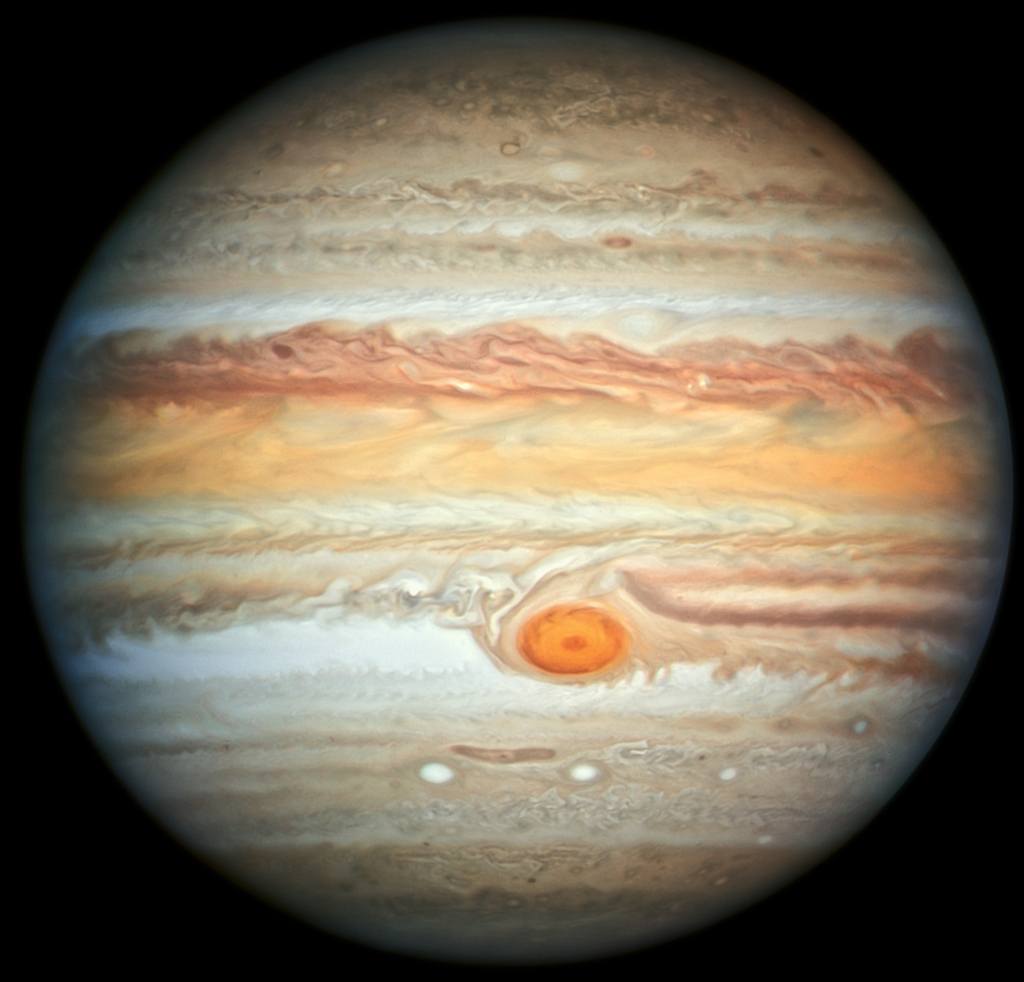SAO MỘC – JUPITER

Ra xa hơn vành đai tiểu hành tinh là Sao Mộc, hành tinh thứ năm từ Mặt trời. Tất cả mọi thứ về sao Mộc đều lớn. Nó lớn đến mức có thể dễ dàng nuốt chửng tất cả các hành tinh khác (hoặc hơn 1.300 Trái đất). Nó cũng nặng hơn gấp đôi so với tất cả các hành tinh khác. Mặc dù có kích thước khổng lồ, Sao Mộc là hành tinh quay nhanh nhất, quay một lần trong vòng chưa đầy 10 giờ.
Sao Mộc cách Mặt trời gấp năm lần so với Trái đất, do đó nhiệt độ bề mặt của nó thấp, khoảng 145°C. Cứ sau 13 tháng, nó lại gần chúng ta hơn và trở nên rất sáng trên bầu trời đêm.
Sao Mộc là một quả bóng khí khổng lồ, không có bề mặt rắn. Nó chủ yếu được làm từ các loại khí rất nhẹ, hydro và heli. Kính thiên văn cho thấy một bầu không khí nhiều mây với vành đai và đốm đầy màu sắc. Tính năng lớn nhất – được gọi là Great Red Spot – là một cơn bão khổng lồ, lớn gấp nhiều lần Trái đất. Nó đã thổi không ngừng trong hơn 300 năm.
Sao Mộc có một vòng bụi mờ, rộng hơn 100.000 km, được phát hiện bởi tàu vũ trụ Voyager. Nó cũng được quay quanh bởi gia đình lớn nhất của các vệ tinh.
Bốn trong số này, được phát hiện bởi nhà khoa học người Ý Galileo năm 1610, là rất lớn. Io có hàng trăm ngọn núi lửa bao phủ bề mặt của nó bằng lưu huỳnh màu vàng cam. Europa có bề mặt băng mịn, trông giống như vỏ trứng nứt. Ganymede có các mảng sáng và tối với các rãnh và miệng hố. Callisto có bề mặt cổ xưa, miệng núi lửa.
Nguồn tham khảo: https://www.esa.int/kids/en/learn/Our_Universe/Planets_and_moons/Jupiter
ĐỘI NGŨ CỐ VẤN:
Dr. Tưởng Duy Hải – Giảng viên Khoa Vật Lý Trường Đại học Sư phạm Hà Nội
Ths. Nguyễn Thị Hồng – Giáo viên Hóa Học Trường THPT chuyên HN – Amsterdam
Ths. Nguyễn Thị Thanh Huyền – Giáo viên Sinh Học trường THPT chuyên HN – Amsterdam
Ths. Lương Thùy Dương – Giáo viên Vật Lý trường THPT chuyên HN – Amsterdam
Ths. Phạm Vũ Bích Hằng – Giáo viên Vật Lý trường THPT chuyên HN – Amsterdam
THÔNG TIN LIÊN HỆ:
Website: http://steam360.edu.vn
Facebook fanpage: https://www.facebook.com/Steam360-Education-377068709549214/
Hotline: 0968.888.220
